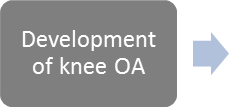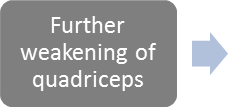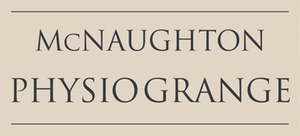Oh, how my knees ache!
At this time of year, when the days are longer and the gardens are growing, we Physiotherapists can see an increase in people reporting sore knees. Osteoarthritis is often the cause and we find that too many patients are happy to accept this as part of getting older. “Joint wear and tear is part of life that cannot be helped”, seems to be an accepted fact, but this is wrong!
The knee is the largest articulating joint in the body. It is a modified hinge joint with a large range of movement allowing the knee to bend and straighten but, as a hinge joint, it does not have the inherent stability of a ball and socket joint such as the hip. The knee has to rely on the surrounding soft tissues – the muscles and ligaments – to support and protect it.
Osteoarthritis (OA) is a very common condition affecting more than a million people in the United Kingdom, more often over the age of 50, and more often women. OA of the knee causes pain, joint stiffness which is particularly noticeable in the morning, and reduced function. Walking, bending and stair climbing, become increasingly difficult as the thigh muscles weaken. Hobbies such as gardening and bowling become a trial rather than a joy. However, do not despair. You can slow the progression of symptoms and maintain quality of life with exercise and resistance training is a key component.
Weakness of the main thigh muscle, the Quadriceps, is a predisposing factor for the development of an arthritic knee and weak Quadriceps will lead to worsening symptoms once the disease process has begun. Therefore, working to improve your thigh muscle strength will both help prevent OA and slow the progression of symptoms if it develops.




Resistance training to build up muscle strength can be in various forms. It may be to work with exercises against body weight or resistance bands at home, it may be to work with machines in a gym, and it may be a fitness class in a Church Hall. Aerobic exercise such as a brisk walk, cycle or swimming can also be effective. In fact, The National Institute of Clinical Excellence (NICE) guidelines describe exercise as a “core management”of OA, irrespective of the person’s age or severity of their condition.
Exercises to help muscle strength will help in other ways too. Better strength can bring about improvements in lower limb alignment and the biomechanics that help stabilise and off load a damaged joint. Exercise will also encourage the release of endorphins, the body’s own painkillers that will make you feel better.
Physiotherapists can advise on the best form of exercise for your knee pain and can also add additional techniques such as joint mobilisations or acupuncture to help you get started on the road to recovery. Lots can be done to keep your knees in good nick – just ask and we can help!

